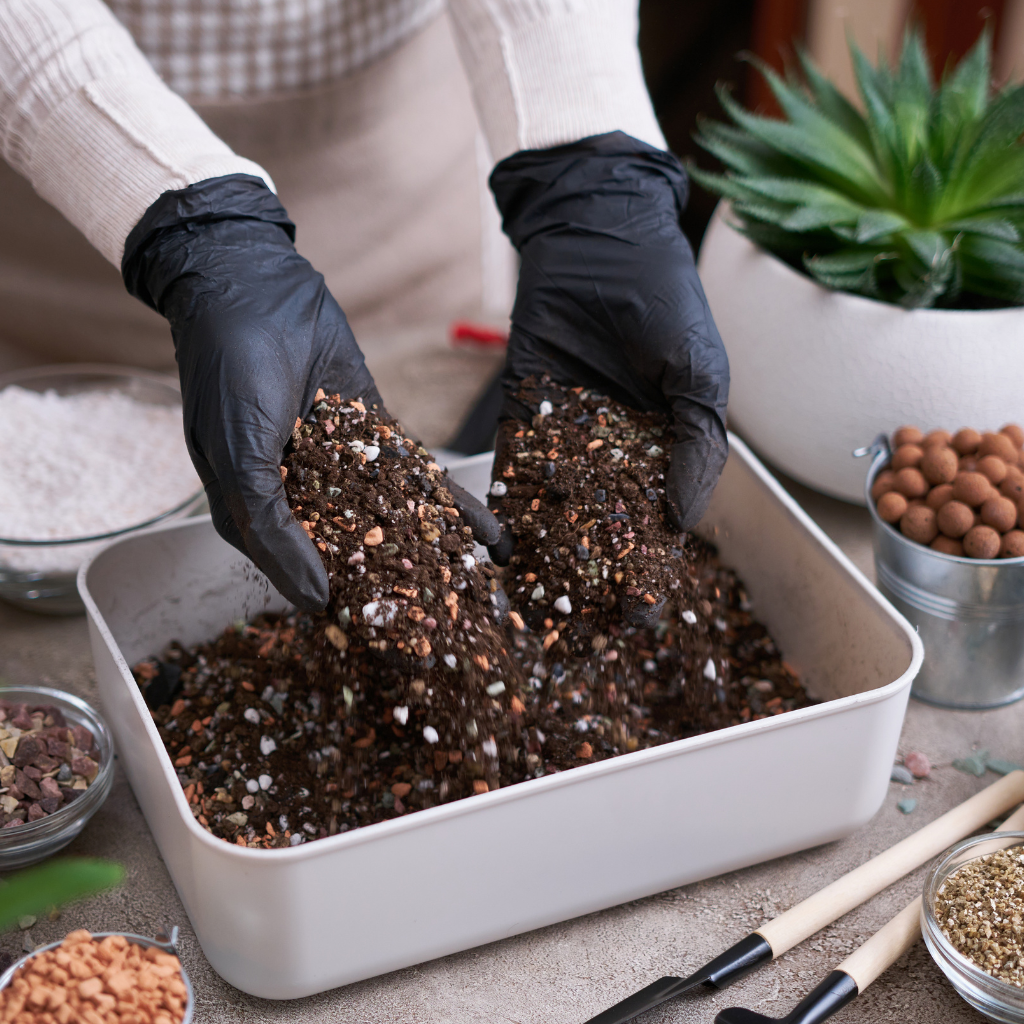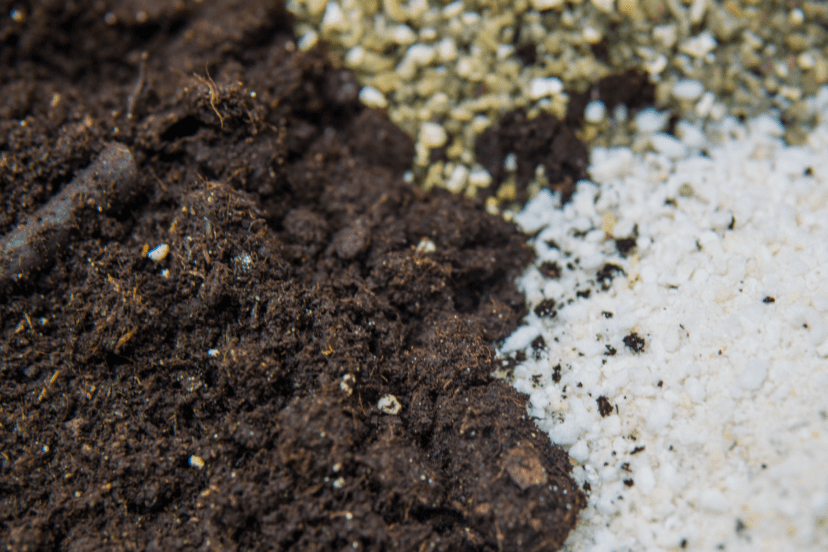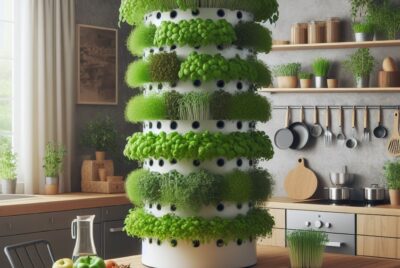Vermiculite and Perlite: Enhancing Microgreen Production
Introduction
Embarking on the microgreen cultivation journey demands an intimate knowledge of the crucial components that fuel successful growth. This extensive guide unravels the pivotal roles played by vermiculite and perlite in enhancing microgreen production, exploring their unique attributes and the dynamic synergy they forge when combined. Whether you’re a novice or a seasoned grower, understanding how these natural elements contribute to a flourishing microgreen bed is essential for a successful harvest. Let’s delve deeper into the intricacies of Vermiculite and Perlite and unlock the secrets to vibrant and healthy microgreens.
Unveiling Vermiculite’s Potential
Definition and Origin
Derived from the weathering of certain minerals, vermiculite undergoes a captivating expansion when heated, resulting in a lightweight, spongy material boasting remarkable moisture-retention capabilities.
Optimizing Cation Exchange Capacity (CEC)
To fully grasp the potential of vermiculite, delve into its exceptional cation exchange capacity (CEC). This property allows vermiculite not just to retain moisture but to exchange essential nutrients with plant roots, facilitating nutrient absorption.
pH-Neutral Stability
Microgreens demand meticulous moisture control, and vermiculite excels in maintaining this delicate balance. Beyond preventing overwatering, its pH-neutral nature stabilizes soil acidity, creating a nurturing environment for microgreen cultivation.
Perlite: The Aeration Maestro
Definition and Characteristics
Perlite, originating from volcanic minerals, distinguishes itself with its lightweight and porous nature. Expanded perlite comprises tiny, sealed cells contributing to its exceptional properties.
Fostering Beneficial Microorganisms
Consider perlite as the orchestrator of aeration in your microgreen bed. Its porous structure not only prevents compaction but also fosters a habitat for beneficial microorganisms, contributing to the breakdown of organic matter and enriching the growing medium.
Reflective Surface Optimization
Additionally, perlite’s reflective surface optimizes light penetration to lower leaves, enhancing overall plant health and vitality.
Synergistic Bliss: Using Vermiculite and Perlite Together
Optimal Ratios for Microgreen Success
Balancing elements is crucial. A recommended ratio of 1:1 vermiculite to perlite provides an optimal blend of moisture retention and aeration. Growers are encouraged to experiment based on specific varieties and environmental conditions.
Tailoring the Mix to Microenvironment
Unlock the full potential of your microgreen bed by understanding the nuanced interplay between vermiculite and perlite. Consider adjusting the mix based on the water requirements of your chosen microgreen varieties and environmental factors such as humidity levels and ambient temperature.
Navigating Ratios for Maximum Impact
Delve deeper into the art of crafting the perfect vermiculite-perlite blend. While the recommended 1:1 ratio provides a solid foundation, growers can fine-tune this mix to cater to the unique needs of different microgreen varieties. Experimentation becomes the key, allowing cultivators to navigate the ratios with precision, achieving a bespoke microenvironment that fosters optimal growth. Embrace the flexibility offered by the vermiculite-perlite synergy, transforming your cultivation space into a tailored haven for microgreens.

Root Resilience: Benefits of Vermiculite and Perlite
Strengthening Root Development
The collaborative use of vermiculite and perlite fosters robust root development, ensuring roots receive adequate oxygen and resulting in healthier microgreens.
Nutrient Uptake Symphony
Dig deeper into the symbiosis between vermiculite, perlite, and root health. The enhanced root development facilitated by this dynamic duo not only promotes nutrient uptake but also fortifies microgreens against stress factors.
Preventing Soil-Borne Diseases
A well-aerated and properly draining medium minimizes the risk of soil-borne diseases, contributing to overall crop health and reducing the need for chemical interventions.
Optimizing Nutrient Absorption
Explore the intricate dance of root resilience and nutrient uptake orchestrated by vermiculite and perlite. The expanded root systems, thriving in the well-aerated mix, act as efficient nutrient conduits, ensuring microgreens access essential elements for optimal growth.
Fortifying Against Environmental Challenges
Moreover, this symbiotic relationship enhances the plants’ ability to withstand environmental stressors, fortifying them against fluctuations in temperature, humidity, and other external factors. The result is not merely vigorous growth but a resilient microgreen ecosystem capable of overcoming challenges with vitality and vigor.
Cultivation Mastery: Improving Microgreen Growth
Expert Tips for Incorporating Vermiculite and Perlite
- Thorough Mixing: Ensure an even distribution of vermiculite and perlite throughout the growing medium.
- Premium-Grade Products: Opt for premium-grade vermiculite and perlite to guarantee optimal performance.
- Moisture Monitoring: Regularly check and adjust watering practices based on the moisture-retention capacity of the mixture.
Inspiration from Success Stories
Draw inspiration from the experiences of fellow microgreen enthusiasts who have witnessed firsthand the transformative impact of vermiculite and perlite. These case studies offer invaluable lessons, providing insights into the nuances of application, troubleshooting common challenges, and achieving remarkable results.
Selecting the Right Vermiculite and Perlite
Choosing Grades and Types for Microgreens
Consider the particle size and grade of vermiculite and perlite when making your purchase. Finer grades are suitable for microgreens, ensuring a uniform mixture and optimal performance.
Prioritizing Quality Assurance
Navigating the market for vermiculite and perlite demands a discerning eye. Prioritize products free from impurities, ensuring the purity of your growing medium. Reputable brands with a commitment to quality assurance and sustainable practices can be trusted allies in your microgreen cultivation journey.
Understanding Particle Size for Precision
When selecting vermiculite and perlite, pay attention to particle size, a critical factor influencing the performance of your growing medium. Opt for finer grades, especially for microgreens, as they guarantee a more uniform mixture, providing an ideal environment for root development and nutrient absorption.
The Purity Assurance Quest
Delve into the sourcing practices of different brands. Beyond particle size, prioritize products free from impurities, ensuring the purity of your growing medium. This commitment to quality is essential for the health and vitality of your microgreens, establishing a solid foundation for successful cultivation.
Sustainable Allies in Cultivation
Reputable brands with a commitment to quality assurance often align with sustainable practices. Consider these brands as trusted allies in your microgreen cultivation journey. By choosing vermiculite and perlite with a dedication to sustainability, you not only optimize the growth conditions for your microgreens but also contribute to a more eco-conscious approach to horticulture.
As you embark on the selection process, view it not just as a transaction but as a strategic investment in the success of your microgreen cultivation. Choose wisely, considering both the immediate needs of your plants and the long-term impact on the environment.
Mastering Microgreen Production: Best Practices
Detailed Steps for Success
- Prepare the Growing Medium: Mix vermiculite and perlite in the recommended ratio.
- Strategic Seed Sowing: Create evenly spaced furrows, sow seeds, and lightly cover with a thin layer of the mixture.
- Meticulous Watering: Maintain consistent moisture levels, avoiding overwatering.
- Illuminate for Success: Provide sufficient light for microgreens to thrive.
- Precision Harvesting: Use clean, sharp scissors to cut microgreens just above the soil level.
Nurturing, Not Overwatering
Delve into the intricacies of microgreen care with a focus on common pitfalls to avoid. Fine-tune your watering practices by considering the ambient humidity and the developmental stage of your microgreens.
Sustainability and Microgreen Cultivation
Eco-Friendly Aspects of Vermiculite and Perlite
Both vermiculite and perlite are naturally occurring minerals, making them relatively eco-friendly choices for growing mediums. Their extraction and production processes typically have a lower environmental impact compared to synthetic alternatives.
Reuse and Recycle for a Circular Ecosystem
Zoom out to the broader environmental landscape and explore the sustainability profile of vermiculite and perlite. Optimize reuse and recycling practices, minimizing waste and contributing to a circular microgreen cultivation ecosystem.
Chronicles of Cultivation: User Experiences
Inspiration from Microgreen Enthusiasts
Immerse yourself in the diverse stories of microgreen cultivators who have embraced the vermiculite-perlite partnership. Beyond technical details, these narratives offer a human touch to the journey, portraying the challenges, triumphs, and passion that characterize microgreen cultivation.
Creative Solutions from Real-World Experiences
Draw inspiration from the varied approaches and creative solutions these enthusiasts have employed, transforming their microgreen endeavors into fulfilling and rewarding experiences. This tapestry of experiences is a testament to the dynamic and personal nature of microgreen cultivation.

Conclusion
In the dynamic world of microgreen cultivation, vermiculite and perlite emerge as dynamic allies, enhancing growth and ensuring a bountiful harvest. As we’ve explored the unique properties of each, it’s evident that their synergy creates an environment where microgreens flourish.
Whether you’re a seasoned cultivator or just beginning your microgreen journey, integrating vermiculite and perlite can elevate your success. As you experiment with ratios, follow best practices, and learn from the experiences of others, you’ll witness the transformative impact of these natural minerals on your microgreen production.
So, go ahead—mix, sow, water, and watch your microgreens thrive with the powerful combination of vermiculite and perlite. Happy growing!
FAQs about Vermiculite and Perlite in Microgreen Production
Is it necessary to use both vermiculite and perlite, or can I choose one?
While you can use either vermiculite or perlite alone, combining them maximizes the benefits. Vermiculite retains moisture, and perlite enhances aeration, creating an ideal microgreen growing environment.
Can I reuse the vermiculite-perlite mixture for multiple batches of microgreens?
Yes, you can reuse the mixture. Ensure proper sanitation and consider adding fresh components or adjusting ratios based on the nutrient needs of subsequent crops.
Are there specific microgreen varieties that benefit more from vermiculite and perlite?
Most microgreens thrive with this combination. Experiment with different ratios based on the specific requirements of individual varieties, but generally, the balanced properties of vermiculite and perlite cater to a wide range of microgreen types.
How often should I water microgreens grown in a vermiculite-perlite mix?
Regular monitoring is crucial. Water when the top layer of the mixture feels slightly dry to the touch. Adjust the frequency based on environmental conditions such as temperature and humidity.
Are there any alternatives to vermiculite and perlite for microgreen cultivation?
While vermiculite and perlite offer a unique balance, alternatives include coconut coir, peat moss, and various soilless mixes. Experimentation will help you discover what works best for your specific microgreen varieties and growing conditions.




